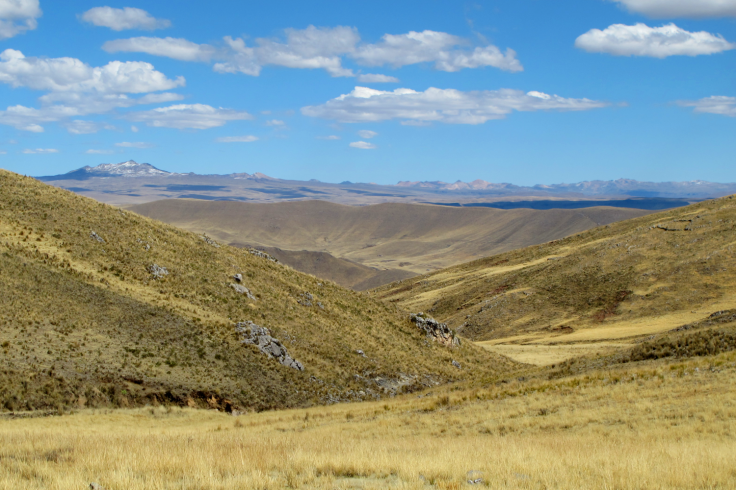How Humans Evolved: Ancient Americans Adapted To Live In Mountain Environment

Ancient humans adapted to many different kinds of harsh environments around the world and the Andes Mountains were no exception. New evidence suggests some of the earliest Americans made their homes thousands of feet up.
Researchers studied human remains and artifacts found in a location about 12,500 feet above sea level in a wide area in southern Peru called the Andean Altiplano. By analyzing the bones of 16 people, and based on other evidence, the team discovered the society had made a permanent home in the highlands, living there year-round earlier than 7,000 years ago, a study in the journal Royal Society Open Science found.
Read: Artifacts from Ancient Americans Show Advanced Culture
This would have been in the days before agriculture, which made settling down in one location much easier, and even beneficial.
Looking at the bones of the people who lived there shows how much time they spent at high altitude because of the levels of certain elements in their remains. The University of Wyoming, one of the institutions with researchers on the archaeological team, explained the low oxygen and high carbon levels in the bones are “the distinct signature of permanent high-elevation occupation.”
Other indications of a permanent settlement, as opposed to a seasonal one, at the archaeological site Soro Mik'aya Patjxa included how far the hunter-gatherers — including the women and children in their ranks — would have had to travel to reach a lower elevation and the fact that the thousands of rock tools and other artifacts all came from material that was locally sourced.
“High-elevation environments above [8,000 feet] … were among the planet’s last frontiers of human colonization” because of the challenges they posed, the study says. Previous research has indicated those locations were settled as long as 9,000 years ago, and this work, from a few thousand feet above that high-altitude threshold, appears to back up that idea. “All observations are consistent with the expectations for permanent use of high-elevation environments,” rather than use on a seasonal basis.
The study adds that while the oldest evidence from this site doesn’t align with the early end of estimates for the first permanent human settlement at high altitude in the world, it still adds to the discussion.
“These results constitute the strongest evidence to date that people were living year-round in the Andean highlands at least 7,000 years ago,” researcher Randy Haas said in the university statement.
Read: An Ancient Society Obsessed with Feet
The study's findings will help scientists better understand how human culture, society and genetics changed in the Andes over time. On a genetic level, the population would have been evolving to adapt to their high-altitude environment where there is less oxygen and the temperatures are colder.
Without comforts like houses with temperature control and supermarkets, ancient humans had to adapt to their environments to survive. And archaeological evidence shows they were good at it. A recent study showed that the earliest people to settle Australia — the ancestors of the modern country’s native tribes — had to change as their environment did, during a time when the Australian land mass was becoming isolated from the rest of the southern Pacific and sea levels were changing, bringing changes in available food with them.
© Copyright IBTimes 2024. All rights reserved.





















